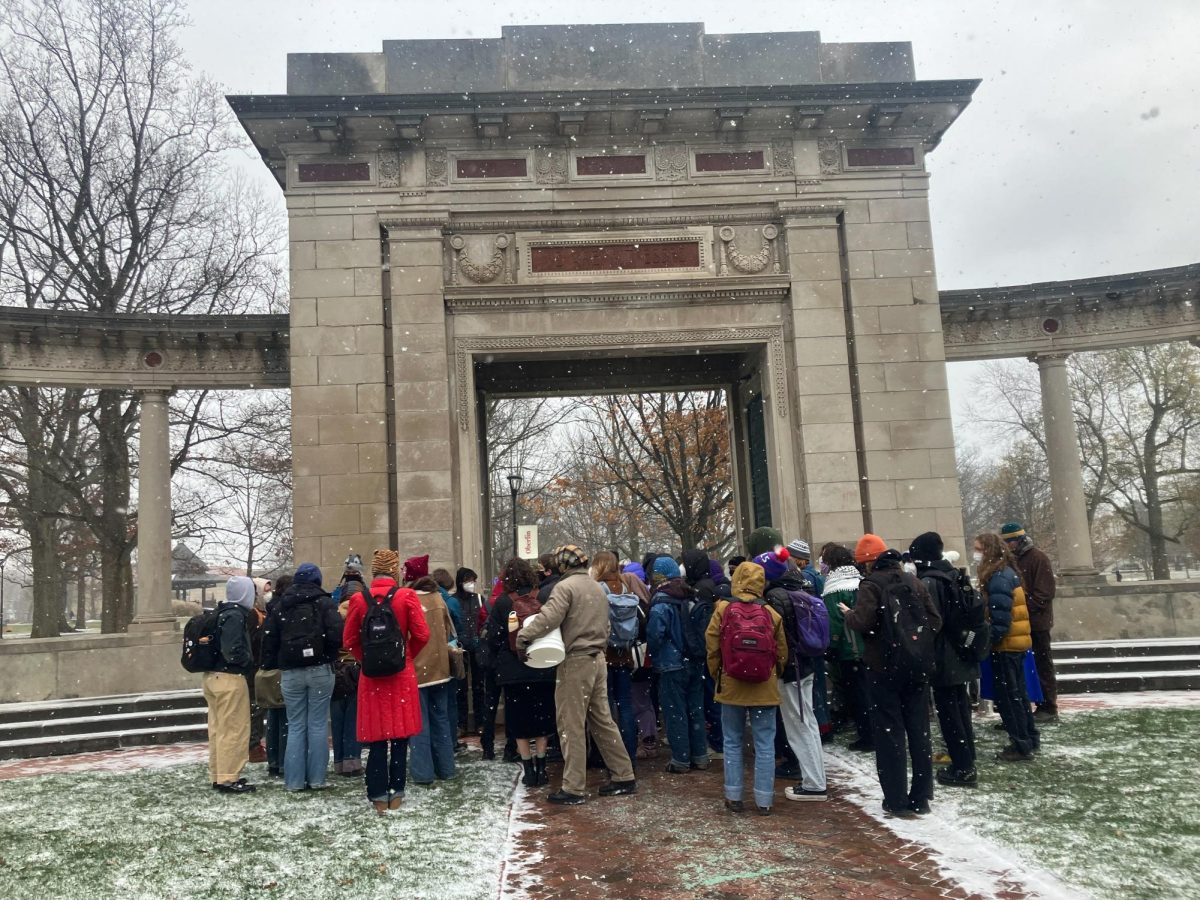This coming Tuesday, Ohioans will vote in Issue 1, a constitutional amendment intended to end gerrymandering by creating a nonpartisan committee to draw state legislative and congressional districts. The issue’s supporters — largely Democrats, but also some Republicans and independent voters — say that putting the power to draw districts in the hands of a commission of Ohio citizens rather than politicians will make politics more fair. The issue’s detractors charge that Issue 1 wouldn’t actually end gerrymandering, and putting the power to draw districts in the hands of unelected appointees would make it more difficult to hold the members of this new commission accountable.
Those are the two sides of the debate over Issue 1, and there are reasonable people on both sides of the issue. But if you go to a polling place to vote Tuesday, the ballot language for Issue 1, which is available online — search “Lorain County what’s on my ballot” — is obviously biased. A quick readthrough reveals that it’s bizarrely emotionally charged and written to favor only one side of the issue.
Let me explain. Take a moment to think about the way that you would want districts in Ohio to be drawn. If a state is politically split 60–40 between Democratic and Republican voters and has 10 representatives, how many should be Democratic and how many should be Republican? Six and four? 10 and zero? Something else? What ratio would be fair? Stop reading this article for a moment and think about this.
Okay. If Issue 1 passes, the district-drawing commission would have to draw districts reflecting the actual political makeup of Ohio. If voters in a state were split 60–40 between Democrat and Republican voters, there would be six likely Democratic districts and four likely Republican districts. The commission couldn’t gerrymander the boundaries of these districts to give Democrats eight or nine or 10 reliable districts. I’d argue that this is a reasonable way to choose district boundaries.
Now here’s how the ballot language of Issue 1 describes this: Issue 1 would “establish a new taxpayer-funded commission of appointees required to gerrymander the boundaries of state legislative and congressional districts to favor either of the two largest political parties in the state of Ohio, according to a formula based on partisan outcomes as the dominant factor.”
Doesn’t that seem like a really biased way to describe what Issue 1 would actually do? I think ballot language should be politically neutral in the way it describes issues, but it’s clear that this ballot language was written by someone with a political agenda. Take note that saying Issue 1 requires gerrymandering is clearly a partisan political opinion. If you read through the entire text of the ballot language, similar problems appear everywhere.
It seems like this ballot language was written by people who really don’t want Issue 1 to pass. That’s because it was. Ballot language is written by the Ohio Ballot Board, which has five members, three of whom are Republicans. It is chaired by Ohio Secretary of State Frank LaRose, and the other members were appointed by politicians.
The members of the Ohio Ballot Board doubtlessly know that Ohio voters broadly support Issue 1. According to a recent poll from the Democracy and Public Policy Research Network, 56.5 percent of likely voters support it. Many Republicans and independents support it. Former Ohio Supreme Court Chief Justice Maureen O’Connor supports Issue 1. She is a Republican. She was chief justice on the court that struck down seven gerrymandered district maps proposed by the Ohio legislature, and in a recent TV ad, she says those same politicians are lying about Issue 1. The Issue 1 ballot language is clearly the Ohio Ballot Board’s attempt to influence voters not to vote for what they know is an amendment that enjoys popular support. Ballot language is not the place for that kind of electioneering.
Election Day is right around the corner, and it’s becoming increasingly important that we keep track of the ways that politicians are trying to subvert elections for their own gain. As this debacle with Issue 1 shows, down-ballot races — anything on the ballot but the presidential race and some Senate or House races — are ripe for this kind of electioneering. Politicians know that these races don’t get as much publicity as the presidential race does. They know that they won’t be punished by voters for interfering in these races.
That’s unfortunate, because down-ballot races are important. While of course the presidential race matters, state and county-level races more closely affect one’s day-to-day life. But politicians know most people going to the polls on Tuesday won’t take the time to research each race in depth. Maybe a few people will decide to read a voter guide, but certainly not everybody.
It’s ironic that even though it feels like politics have come to dominate every area of American life, down-ballot races are still neglected. I think this is a result of the way we’ve come to talk about politics in America. In 2016, political discussion was shaped by people who realized that arguing on the internet is fun. But arguing on the internet is also exhausting, and after three presidential election cycles shaped by loud people online, it’s no longer very fun.
Politics shouldn’t be a culture war waged for the purposes of self-aggrandizement the way it was in 2016, and it shouldn’t be energy-sucking and toxic like it was in 2020 and more recently. In a perfect world, political discussion would contain less arguing about the next inane culture-war issue — does Shovel Knight contain covert pro-gay signaling!? — and more discussion about overlooked parts of the ballot, like Issue 1.
It’s our responsibility, come Election Day, to buck the trend. Read the full text of Issue 1, or read a quick explainer. Take a look at a voter guide for your district, and take a trip to the polls Tuesday. See you there.





